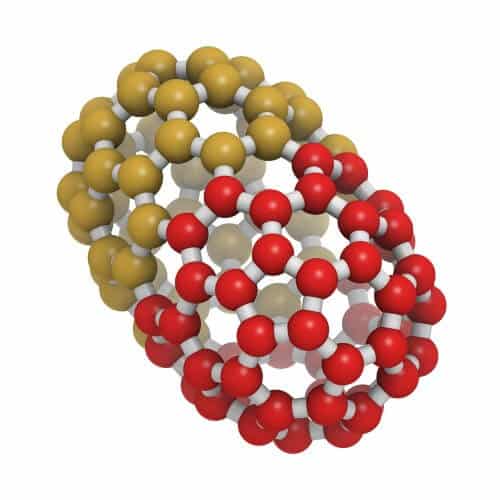Using the gel reduces the size of the tumor after a smaller number of Herceptin treatments compared to a normal infusion of the drug - and prevents weight loss

Scientists at the IBM Research Laboratory, in collaboration with researchers at the Institute for Bioengineering and Nanotechnology in Singapore, present a breakthrough method for delivering drugs in the human body, and demonstrate for the first time a non-toxic, biodegradable, water-based gel with a structure compatible with that of the human body, which allows to lead Effectively the drugs for breast cancer patients to the place where they are required to act.
The current study identified that in approximately 25% of breast cancer patients, epidermal growth factor type 2 (human epidermal growth factor receptor 2 - HER2) appears. This is a type of cancer cell that is considered particularly aggressive, due to its rapid rate of spread and the low survival rate of patients in whom it is found.
Breast cancer treatment varies according to the size, stage of the tumor and its growth rate, as well as according to the type of tumor itself. Today, three categories of treatments are defined after surgery to remove the tumor: hormone inhibitor therapy, chemotherapy, and monoclonal antibodies (mAbs). The most well-known drug in this type of treatment is Herceptin.
In the case of treatment with antibodies, such as Herceptin, the drug is combined with a salt solution, and given by infusion. The antibodies focus on specific cells or proteins, and block certain receptors in these cells in order to destroy the cancer cells and stop the spread of the tumor. But the drugs are absorbed and broken down throughout the body, and therefore their active life is not long and their effectiveness is limited when they are injected directly into the bloodstream.
In order to deal with this problem, the researchers at IBM and the Institute for Bioengineering and Nanotechnology in Singapore developed an innovative synthetic gel, consisting of 96% water combined with a biodegradable polymer. This new gel is able to carry a wide variety of drug payloads, from small molecules to large molecules, such as those of the antibodies used to treat cancer.
This unique new material also exhibits many of the properties of water-soluble polymers that are compatible with human biological structure, continuing to retain their shape without completely disappearing. In this way, the gel can function as a drug depot, and release its contents in a slow process, where it is needed in the body: directly into the tumor area, and for many weeks instead of only a few days in which drugs given by infusion survive. After the delivery of the drug is finished, the gel degrades in a natural process, passes through and is excreted from the body.
Current medical development is based on research and innovative technologies born in IBM's research laboratories and originally intended for use in the fields of electronics. The gel is able to ensure a regular delivery of drugs, without stimulating and causing a significant reaction of the immune system against it and sending the drug directly to the cancer tumor cells, without harming the healthy cells surrounding it.
In animal studies, which were carried out at the Institute for Bioengineering and Nanotechnology in Singapore, improved results were found when the antibodies were administered through the gel, even in low doses, compared to the administration of the antibodies by themselves, using the methods that existed until now.
Tumor dimensions: After treatment for 28 days, a 77% reduction in tumor dimensions was recorded in animals treated with the gel by subcutaneous injection at the tumor site, compared to a 0% reduction in animals that received the same dose of the drug by infusion.
Frequency of treatment: by subcutaneous injection of the antibodies mixed in the gel at a point particularly far from the tumor, the researchers were able to reduce the frequency of the required injections from four to one, while maintaining the same healing effect - all compared to the infusion of the antibodies in solution into the vein.
Weight: the drug goes directly to the tumor itself, allowing to damage only the infected cells, leaving healthy cells in their place. These results allowed the animals in which the treatment was attempted to show a stable to moderate increase in their weight during the study, compared to a significant loss of weight that characterizes the treatments with cancer drugs.
Non-toxic: Since the water-based gel is non-toxic, the study showed a high level of biodegradability. No response of immune system stimulation or inflammation was recorded, and the material completed a full process of degradation and passage through the body within six weeks.
IBM has been developing new materials in the field of nanomedicine since 2003. Stable delivery of Herceptin at the exact location of the cancerous tumor, using IBM's unique gel, provides a higher efficiency of fighting the tumor, and reduces the frequency of injection. Thus, it is possible to improve the level of response to treatment, and offer an improved alternative to the existing breast cancer treatment. IBM estimates that the technology could also be used to deliver other types of antibodies or proteins, to treat additional diseases.
IBM's research program in the field of polymers for nanomedical uses began operating four years ago, and is based on the experience the company has gained over decades of developing materials that have traditionally focused on the world of semiconductors.
The full study is published this week in the scientific journal Advanced Functional Materials.
